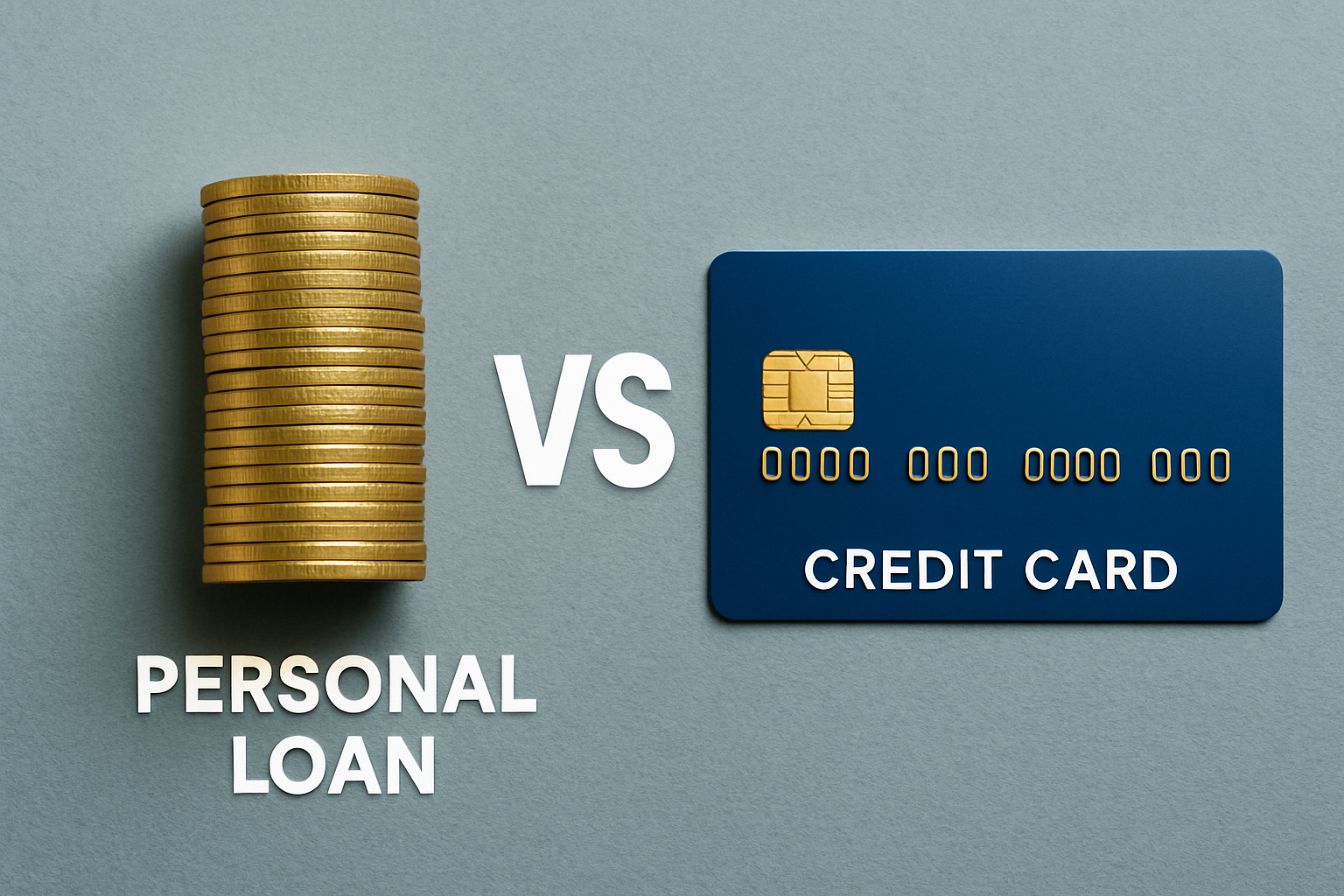In the fast-paced financial world today, borrowing has never been easier. When you have a medical crisis, are getting married, or want to consolidate debt, two of the most favorite borrowing possibilities are credit card loans and personal loans. While both offer instant cash access, they vary in cost, flexibility, and appropriateness. This article will discuss the main distinctions between personal loan and credit card loan, their advantages and disadvantages, and the situations in which each is best.
WHAT IS A PERSONAL LOAN?
A personal loan is a type of unsecured loan that banks, NBFCs, and online lenders provide. You take a fixed amount and repay it in a pre-decided tenure in the form of equated monthly installments (EMIs).
Key Features:
- Loan amount: ₹50,000 to ₹40 lakhs (lender-dependent)
- Tenure: 12 to 60 months
- Interest rate: 10% to 24% per annum
- Needs proof of income, KYC, and at times a good credit score
- Released fast (within 24-72 hours)
WHAT IS A CREDIT CARD LOAN?
A credit card loan, or credit card loan, is a pre-approved loan facility provided to suitable credit cardholders, as per their credit limit and credit history. It involves no extra documentation and is commonly disbursed instantly.
Key Features:
- Loan amount: Subject to your available credit limit or pre-approved limit
- Tenure: 3 to 48 months
- Interest rate: 13% to 28% per annum
- Fast sanction with less or no documentation
- Frequently zero processing charge or lesser fees
PERSONAL LOAN vs. CREDIT CARD LOAN: A COMPARATIVE ANALYSIS
| Parameter | Personal Loan | Credit Card Loan |
|---|---|---|
| Approval Time | 24–72 hours | Instantly or within a few minutes |
| Documentation | Income proof, KYC | Minimal to none (for pre-approved users) |
| Loan Amount | Higher loan amounts available | Limited to your credit limit |
| Interest Rate | 10% – 24% p.a. | 13% – 28% p.a. |
| Repayment | Fixed EMIs over 1–5 years | EMIs debited to your card or account |
| Flexibility | Medium | High (especially if using revolving credit) |
| Impact on Credit Score | Affects based on repayment behavior | High utilization can negatively impact score |
| Best For | Large expenses like weddings, home renovation, debt consolidation | Short-term needs, emergency purchases |
WHEN SHOULD YOU OPT FOR A PERSONAL LOAN?
✅ Ideal For:
- Financing large expenses (₹1 lakh+).
- Debt consolidation on multiple credit lines.
- Fixed EMIs for a longer repayment term.
- Good credit borrowers looking for lower rates.
🚫 Avoid If:
- You require money urgently and cannot wait for disbursal.
- The loan is a small or short-term requirement (e.g., less than ₹50,000).
WHEN TO USE A CREDIT CARD LOAN?
✅ Best Suited For:
- Short-term emergencies or cash crunches.
- Quick access to money without paperwork.
- Pre-approved customers with good repayment record.
🚫 Avoid If:
- You’re a spender, or you tend to carry credit card balances too long.
- You’re near your credit limit (can damage your credit score).
- You’re opting for a long-term loan (interest can snowball).
PRO TIPS BEFORE YOU BORROW
Compare APRs (Annual Percentage Rates), not merely the flat interest rate.
- Check charges for processing fees, foreclosure fees, and penalties.
- Read the small print—particularly with credit card loans, where offers can seem good but contain secret charges.
- Keep your credit score over 700 for more favorable loan conditions.
- Make use of EMI calculators to calculate your monthly load before taking the plunge.
FINAL VERDICT: WHICH ONE WINS
- There is no one-size-fits-all answer—the best choice for you will depend on your financial circumstances and borrowing purpose.
- Go for a personal loan if you require larger sums and organized repayment over time.
- Go for a credit card loan if you want the convenience and speed and have a smaller short-term requirement.
- In either scenario, fiscal responsibility and on-time repayments are the ingredients for a good credit history.
CONCLUSION
Knowing the difference between a personal loan and a credit card loan can assist you in making smart financial decisions. Borrow wisely, strategize your EMIs, and borrow only that which suits your repayment capacity and financial objectives.

